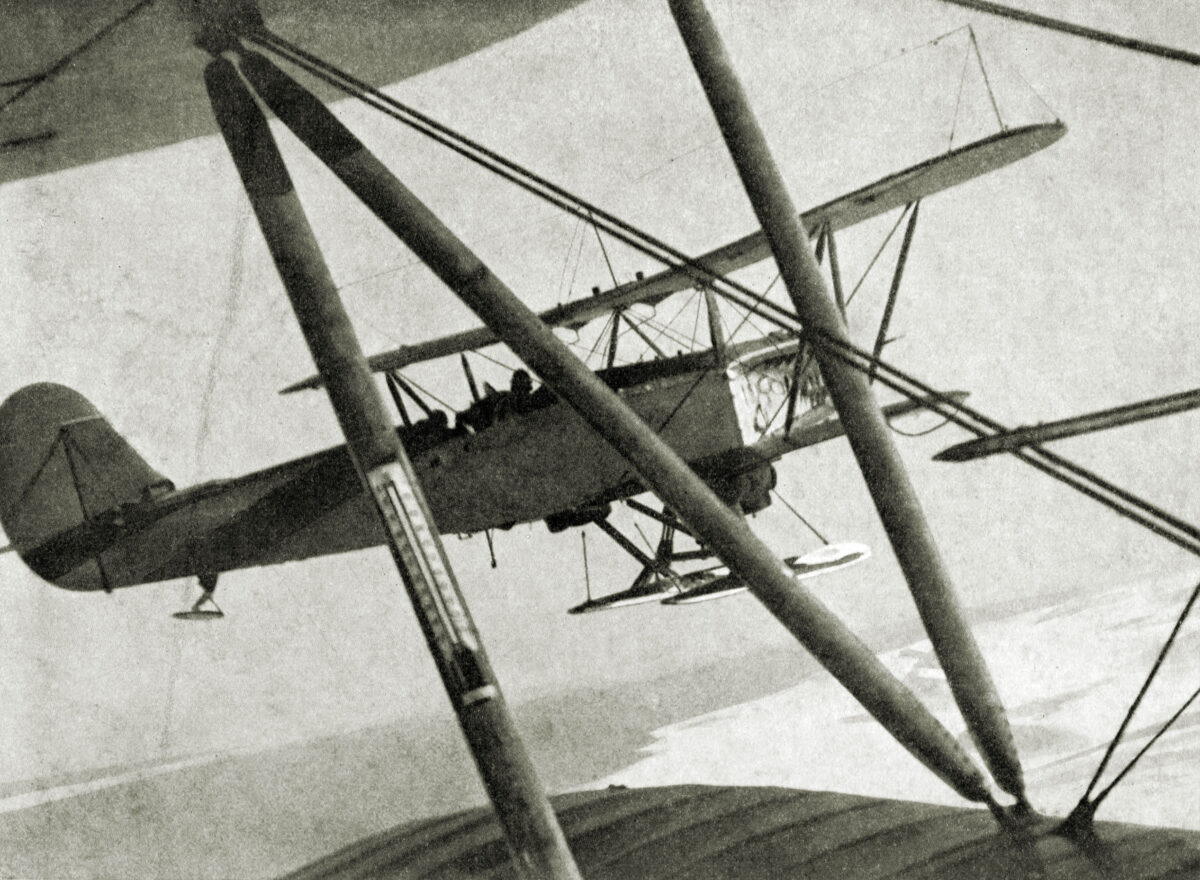A Soviet Polikarpov R-5, which served as a bomber and reconnaissance airplane in the 1930s and ’40s, flies on a rescue mission in 1934. It was on its way to save the passengers and crew of the Soviet research vessel Cheliuskin, which had been attempting to prove the feasibility of steaming via the Northern Passage from Murmansk to the Bering Sea and from there to the port of Vladivostok. The ship didn’t make it, having been trapped and then crushed by ice. The 104 people on board, including a six-month-child, had to abandon ship and hope they could be rescued from the ice. One crewmember died when he was crushed by the ship’s cargo as the Cheliuskin was being abandoned, but the rest managed to escape the sinking vessel. The 10 women and two children aboard were flown out in March, but the rest had to remain behind until a final rescue attempt in April. They scraped out a landing strip on the ice and pilots flying the Polikarpovs, an ANT-4 and an American Consolidated Fleetster managed to touch down on the ice and save them all. The Soviet pilots who flew the rescue mission received the honorific of Hero of the Soviet Union. Two Americans who participated received the Order of Lenin.
historynet magazines
Our 9 best-selling history titles feature in-depth storytelling and iconic imagery to engage and inform on the people, the wars, and the events that shaped America and the world.


